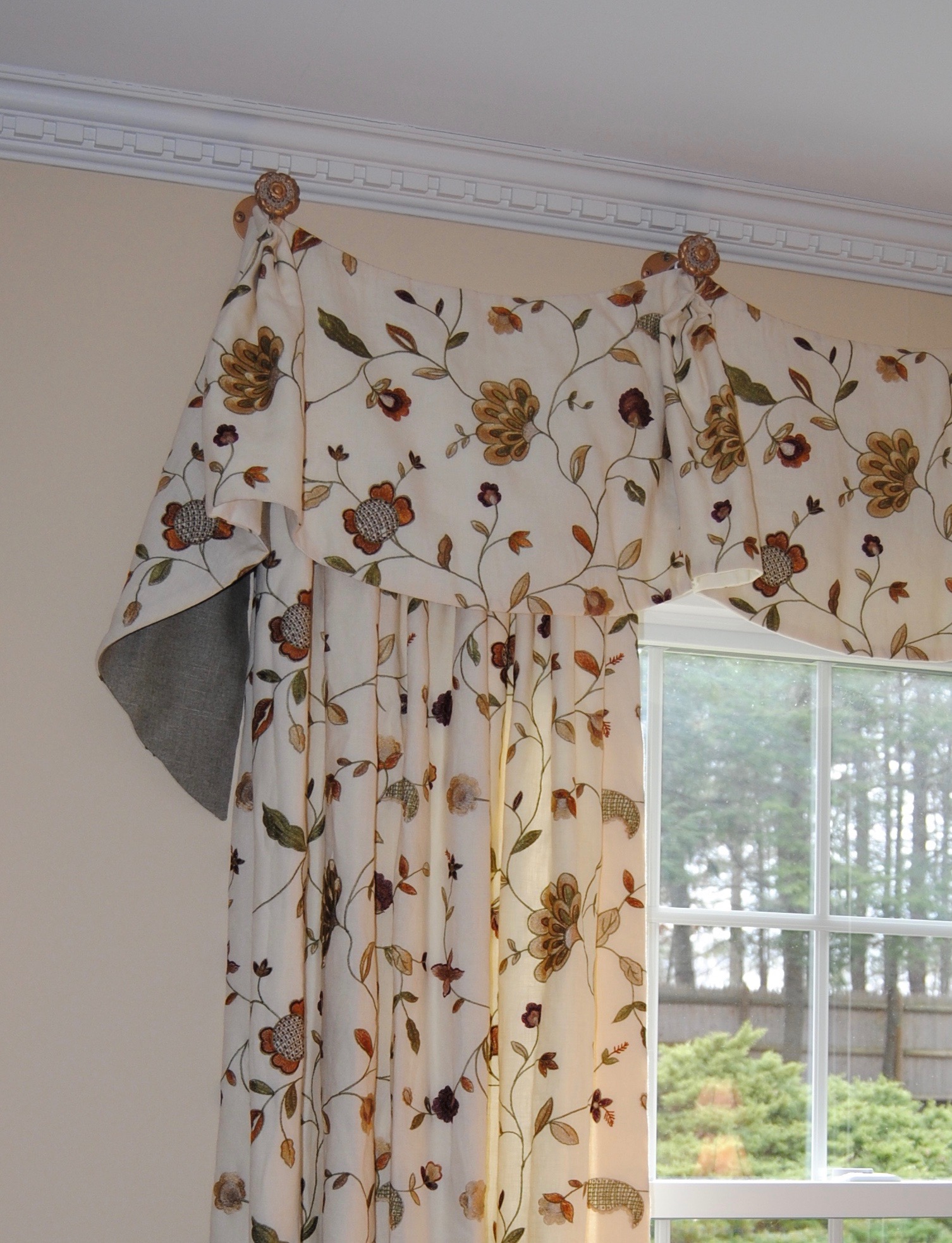For the love of window treatments
Windows can be dressed in a variety of ways and what you choose and how you install it will impact the look of your room.
Here are a few tips as you make your choices:
The simplest and most versatile way to dress a window is with drapery panels. However, nothing is worse than too short panels – they are the drapery equivalent of flood water pants. My personal general preference is a ½” to 1” break on the floor, but at least touching the floor is a must. For ball gown elegance, allow fabric to puddle 8”” to 18” on the floor.
Hanging your window treatment above the window will instantly create the illusion of more height in your room. For ceilings in the builder standard 7’-8” range of years past, hanging valances right at the ceiling can do a world of good for the perceived proportions of the room.
If you are using a window treatment like a pair of panels that covers the sides of your window frame, upsizing to a rod 12” to 16” wider than your window measurement will expose more of the glass to let in more light while creating the illusion of a more generous sized window.
Use clip on rings or sewn on rings, or drapery pins to attach rings to panels and a coordinating decorative rod rather than gathering the panels directly on the rod, which can end up looking either frilly, if it creates a ruffled header, or sloppy if the pocket is much larger than the rod.
Some rods are not meant to be seen. A functional traverse rod that doesn’t show when the panels are closed, leaves the utilitarian and decidedly not decorative rod exposed like visible underwear when the panels are open … either cover it with a valance or cornice, or use a decorative traverse rod that has the working mechanism on the back side and a decorative front face.
Working fabric blinds, as well as many styles of tailored valances, should always be mounted on a fabric-covered board. Valances will hang correctly and blinds will function properly when secured to a solid surface rather than sliding around on a rod.
For a professional looking installation, curtain panels and valances should have extra fabric that returns to the wall on the outside edges on the window treatment so there is not a gap between the curtain and the wall when viewed from the side.
I love custom window treatments. I am a self-confessed curtain snob … I don’t think most ready-made curtains are worth the money … sizes can be off by a substantial amount from panel to panel, panel widths tend to be skimpy, dye lots can be tricky, stitching is often poor quality, the lining is generally cheap if it exists at all, and interlining, which makes a HUGE difference is non-existent. That said, inexpensive panels and decorative rods from a discount store are a great option to use for staging a home for sale if windows are not already treated, or if the current treatments are heavy and/or dated. In a real estate staging application they are only used to create an impression as buyers pass through the rooms of a house.
Custom window treatments, on the other hand, are designed to do exactly what you need them to do for a particular window. Couture for your windows for a whole lot less than couture clothing and something your windows will wear every single day!
They can be sized to exactly the right length and depth to work with under-treatments (like blinds, shades or shutters), and to take into account architectural details like millwork, or uneven floors.
They can be made of any material or combination of materials and in a custom designed style so that they compliment and enhance both the window and the other details in the room.
They can be designed, and sometimes layered, to provide privacy, light control, softness, pattern or texture, and color.
They can be enhanced with dressmaker details, trims, and standout hardware that elevate the design of the whole room. Adding these details is like adding accessories to an outfit – they take it from ordinary to beautiful and unique!
Custom hard treatments – blinds, shutters, shades – from a reputable company, will be sized just for your window (there is no “standard” sized window) and give you many, many years of service.
Custom draperies are often not only lined but interlined with a flannel layer sandwiched between the face fabric and lining providing softer folds, and a sumptuous, elegant drape, and protecting the face fabric from the ravages of sun exposure. Interlining can make an ordinary or inexpensive face fabric look luxurious.
Questions about custom window treatments?
We would love to hear from you!
You might also like THIS post on Window Treatment Do’s and Don’ts






